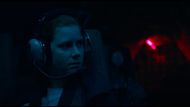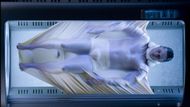If you’ve just emerged from the adrenaline-soaked shuffle of Pulp Fiction, you’re probably craving more cinematic acrobatics and twisted timelines—so, what movies should you watch after Pulp Fiction? Like Tarantino’s 1994 classic, these films toy with chronology, dropping you into the middle of the action and forcing you to piece together the narrative puzzle. In this roundup, we’ll explore ten non-linear timeline masterpieces that stretch from psychological thrillers to sci-fi epics.
You’ll discover how fractured timelines can heighten suspense, deepen character arcs, and reward repeat viewings with hidden connective tissue. Whether it’s chasing shattered memories or inhabiting alternate realities, these titles prove that the most compelling stories aren’t always told from A to B. Let’s gear up for a journey through time—backward, forward, and every which way in between.
How Pulp Fiction defined the twisted timelines
At its core, Pulp Fiction upends the classical three-act structure by weaving multiple story threads out of chronological order. Rather than a linear progression—scene 1, then scene 2, then scene 3—Tarantino rearranges vignettes (“Pumpkin and Honey Bunny,” “Vincent Vega and Marsellus Wallace,” etc.) to create dramatic irony and surprise. This technique, known as a non-linear narrative, allows filmmakers to:
- Reveal character fates out of turn, heightening tension when you know more than the protagonists.
- Play with thematic resonance, letting a seemingly throwaway moment gain weight when revisited later.
- Invite active viewing, as audiences constantly reconfigure their understanding of “what happened when.”
In film studies, a non-linear timeline simply means that scenes are presented out of their actual chronological order. You might start with the climax, loop back to the exposition, then jump ahead to the resolution—all in service of emotion and mystery. Tarantino’s shuffle doesn’t just look cool; it underscores themes of chance, fate, and moral ambiguity by revealing consequences before causes.
By fragmenting time, Pulp Fiction turns ordinary bar banter, a routine car ride, or a diner holdup into pieces of a larger mosaic. It forces viewers to assemble the narrative in their minds—an exercise that rewards those who pay attention to dialogue cues and visual callbacks. In many ways, Tarantino’s breakthrough paved the way for filmmakers to trust audiences with more complex, puzzle-box storytelling.
This bold approach invites us to watch the same film multiple times, each viewing revealing new connections, much like revisiting a graph with new data points. Pulp Fiction didn’t invent non-linear film, but it catapulted the technique into mainstream consciousness by showing that fragmentation can be as gripping as a straight-line thriller.
10 movies with twisted timelines to watch after Pulp Fiction
1. Memento (2000)

Where to watch: Netflix, Apple TV+
Christopher Nolan’s breakthrough casts you as Leonard Shelby, an insurance investigator with anterograde amnesia who can’t form new memories and uses tattoos, Polaroids, and notes to hunt his wife’s killer.
The film unfolds in two interwoven strands: color sequences in reverse order and black-and-white scenes moving forward, meeting only at the climax in a powerful convergence that simulates Leonard’s fractured mind. This reverse-chronology timeline structure not only intensifies the mystery but also aligns you with Leonard’s disorientation, forcing you to question every revelation until the very end.
2. Arrival (2016)

Where to watch: Netflix
Denis Villeneuve’s sci-fi drama begins with what feels like flashbacks of linguist Louise Banks’s daughter, intercut with her efforts to decode alien symbols. As Louise learns the Heptapod language—circular, simultaneous in time—the narrative itself fractures non-linearly, revealing crucial future events as if they were past memories.
This bold choice of timelines reframes our understanding of “what happened when,” transforming an alien encounter into a profound meditation on free will, grief, and the relativity of time.
3. The Prestige (2006)

Where to watch: Netflix
In this tale of rival magicians, Christopher Nolan juggles three timelines—present trial, Angier’s diary, and Borden’s diary—using a Russian-doll structure that unfolds layers of obsession and secrets. Switching between Alfred Borden’s trial, Robert Angier’s diary entries, and flashbacks of their budding rivalry, the film ties each jump thematically, mirroring the sleight of hand at the heart of their craft. The result is a puzzle-box mystery where timelines collide in service of one ultimate prestige.
4. Eternal Sunshine of the Spotless Mind (2004)

Where to watch: Netflix
Michel Gondry’s bittersweet romance erases memories in reverse, tracing Joel’s relationship with Clementine backward through a mind-scrubbing procedure. As each memory dissolves—from end to beginning—you relive their love story in retrograde, discovering new nuances with each rewind. This reverse journey amplifies both the beauty and pain of their connection, illustrating how memory shapes identity and longing.
5. Amores Perros (2000)

Still from Amores Perros / Netflix
Where to watch: Netflix
Alejandro González Iñárritu’s triptych opens with a car crash that binds three distinct stories: an ex-model’s redemption, a hitman’s betrayal, and a dogfighter’s revenge across Mexico City’s social strata. The film leaps between these timelines non-chronologically, letting you piece together how fate and chance collide, reinforcing the thematic motif of “love hurts” in both human and canine forms.
6. Mr. Nobody (2009)

Where to watch: Amazon Prime Video
Jaco Van Dormael’s philosophical sci-fi follows Nemo Nobody—the last mortal in 2092—as he recounts branching life stories to a journalist. Through flashbacks and imagined futures, the film explores alternate realities based on every key choice Nemo makes, from childhood dares to adult romances. Its kaleidoscopic structure probes the butterfly effect, asking: what if every decision spawned a new world?
7. Crash (1996)

Where to watch: Amazon Prime Video
David Cronenberg’s provocative thriller intercuts the erotic lives of a group of symphorophiliacs (people aroused by car crashes) through a linear yet disorienting lens. While the plot moves forward chronologically, Cronenberg’s use of montage, intercut scenes of trauma, and recurring crash imagery gives the narrative a looping, near-obsessive feel that mirrors his characters’ fetishistic compulsion.
8. Blue Valentine (2010)

Where to watch: Amazon Prime Video, Netflix
Derek Cianfrance shatters the typical romance arc by splicing together the honeymoon days and the divorce proceedings of Dean and Cindy. The film jumps abruptly between their hopeful courtship and their unraveling marriage, revealing cause and consequence, sometimes showing the fallout before the spark, so that the pain of disintegration feels as raw as the joy of new love.
9. (500) Days of Summer (2009)

Still from (500) Days of Summer / Amazon Prime Video
Where to watch: Available to rent on various streaming services
Marc Webb’s offbeat rom-com labels each segment with a “Day X” title card, then jumps across those 500 days out of order to mimic the way memory highlights emotional peaks. One scene leaps from Day 32 to Day 142, then back to Day 1, reflecting protagonist Tom’s emotional roller-coaster as he falls for—and gets dumped by—Summer. The result is a refreshingly realistic take on how we recall relationships: by highs and lows, not by dates.
10. Gone Girl (2014)

Still from Gone Girl / Amazon Prime Video
Where to watch: Amazon Prime Video
David Fincher’s thriller toggles the timeline between Nick’s real-time investigation of Amy’s disappearance and Amy’s “diary” flashbacks, nesting one storyline inside the other to keep the truth always in doubt. This nested, he-said/she-said structure teases out motives and misdirection, revealing critical pieces of the puzzle just as the investigation reaches its darkest turns.
From Pulp Fiction’s café standoff to the mind-melting loops of Memento, twisted timelines have become a hallmark of ambitious cinema. These ten films carry forward Tarantino’s legacy by treating chronology as clay—malleable, surprising, and thematically loaded. Whether you’re decoding memory gaps in Eternal Sunshine of the Spotless Mind, juggling fate in Arrival, or reliving love’s high and low points in Blue Valentine, each story rewards active engagement.
So pop some popcorn, clear your schedule, and prepare to navigate fractured timelines, overlapping realities, and narrative kaleidoscopes. These movies prove that sometimes, the best way forward is backward—and that the true pleasure of a non-linear film lies in piecing together the puzzle long after the credits roll.
